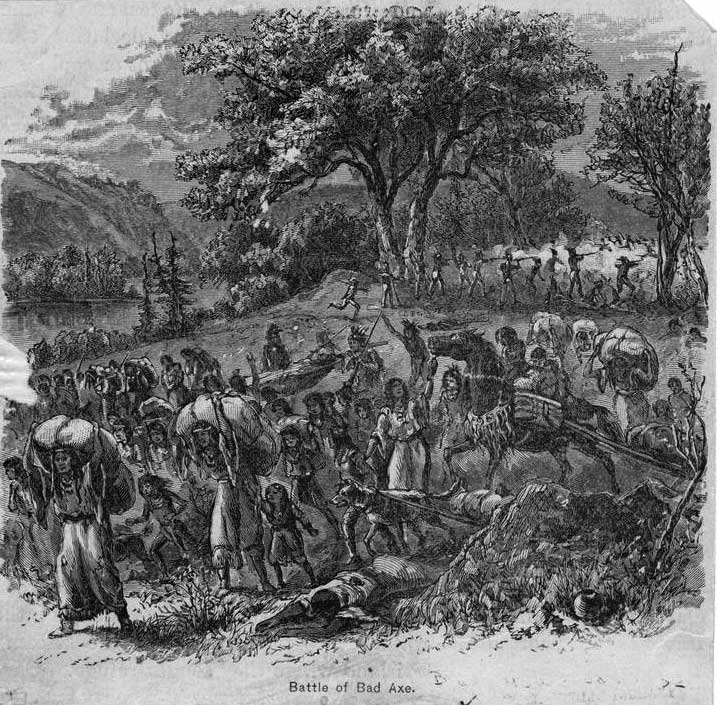
The Blackhawk War
Indian braves from Illinois and Wisconsin opposed attempts for their resettlement. Led by their chief, Black Hawk, they led an able defense against the settlers. The Indians were subdued by a US army force that included Abraham Lincoln and Jefferson Davis.
The Black Hawk War began when a group of Sauk Indians, led by Black Hawk, crossed the Mississippi and entered Illinois. Black Hawk and many other Native Americans did not accept the Treaty of 1804, which called on the Indians to give up all their lands east of the Mississippi. Along with his objections to the treaty, Black Hawk truly believed he could prevail in a war against the US.
In 1831, Black Hawk crossed over from Iowa back into Illinois. The governors of Illinois and Michigan called out the militia. Black Hawk responded by agreeing to the terms of the original treaty and returning to Iowa. The winter of 1831-1832 was particularly harsh. In April 1832, Black Hawk returned to Illinois with 400 warriors, as well as their families, including many older people. Based on the makeup of those who came with him, it is unlikely that Black Hawk had any hostile intentions in Illinois. He was just looking for a place for his people to plant corn and have an easier life, at least for a time.
The governor of Illinois was not willing to take any chances. He immediately mobilized the militia. On May 14th, Black Hawk sent an emissary to talk to the troops under a flag of truce. Despite this, the militia chose to kill the emissary. In response, Black Hawk attacked the militia and soundly defeated them in what became known as the Battle of Stillman’s Run. President Jackson ordered a force of 1,000 Federal troops, under the command of General Winfield Scott, to take control of the situation. However, the war was resolved before they could arrive.
Black Hawk had withdrawn to Wisconsin, where his forces conducted raids on American settlements. U.S. troops caught up with Black Hawk’s men and defeated them at the Battle of Wisconsin Heights. Black Hawk withdrew across the Mississippi, but the American troops continued to pursue them. Black Hawk decided to make a stand at the Battle of Bad Axe. The American troops defeated the Native Americans there, killing or capturing almost all of them, including many women and children.
The Black Hawk War is notable for being the last resistance in what would be called "The Old Northwest," as well as for being a war in which many Americans who later became household names participated. Some of the soon-to-be-famous Americans who took part in this war include Abraham Lincoln, Jefferson Davis, Winfield Scott, and Zachary Taylor.
 >
>